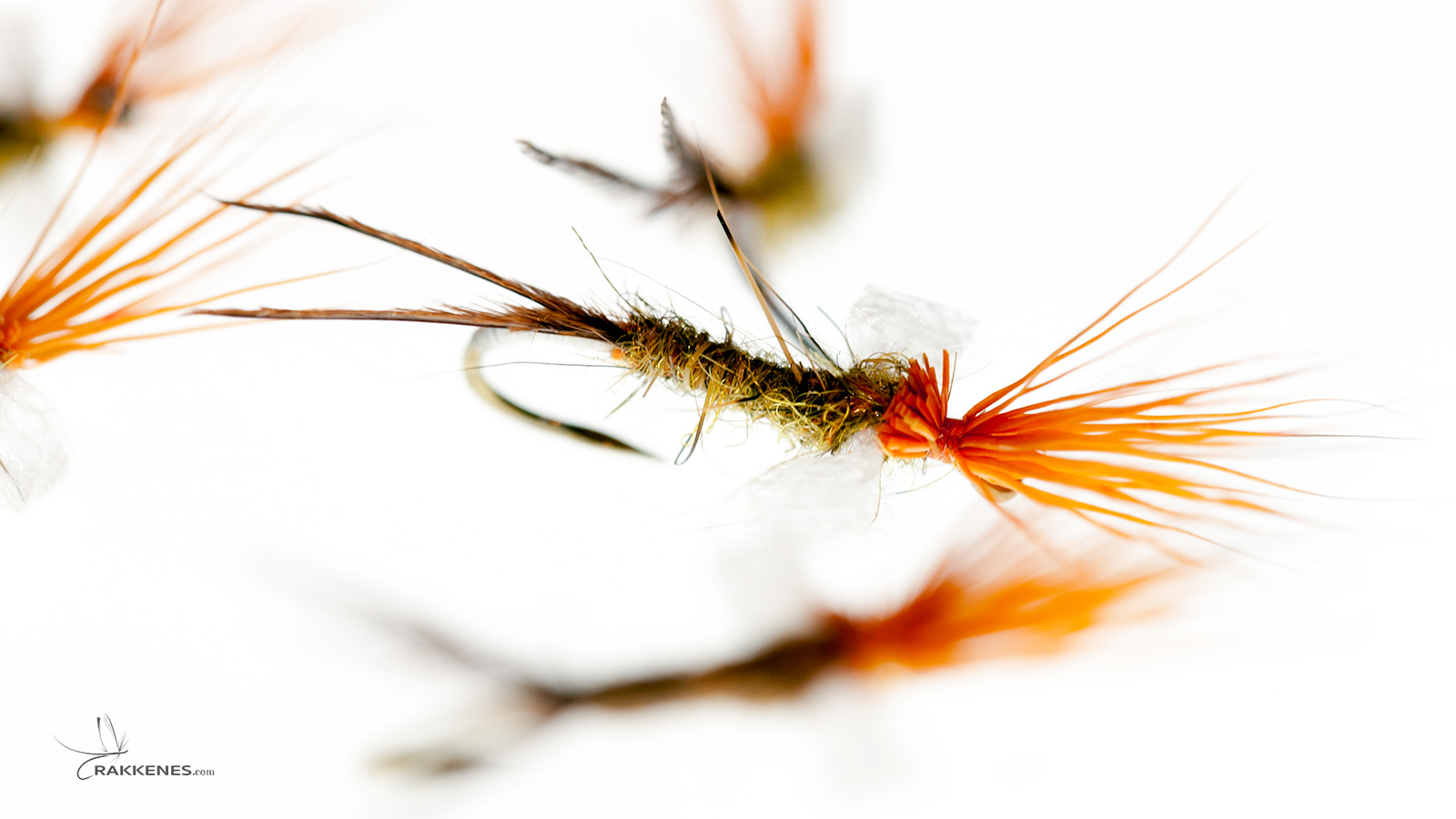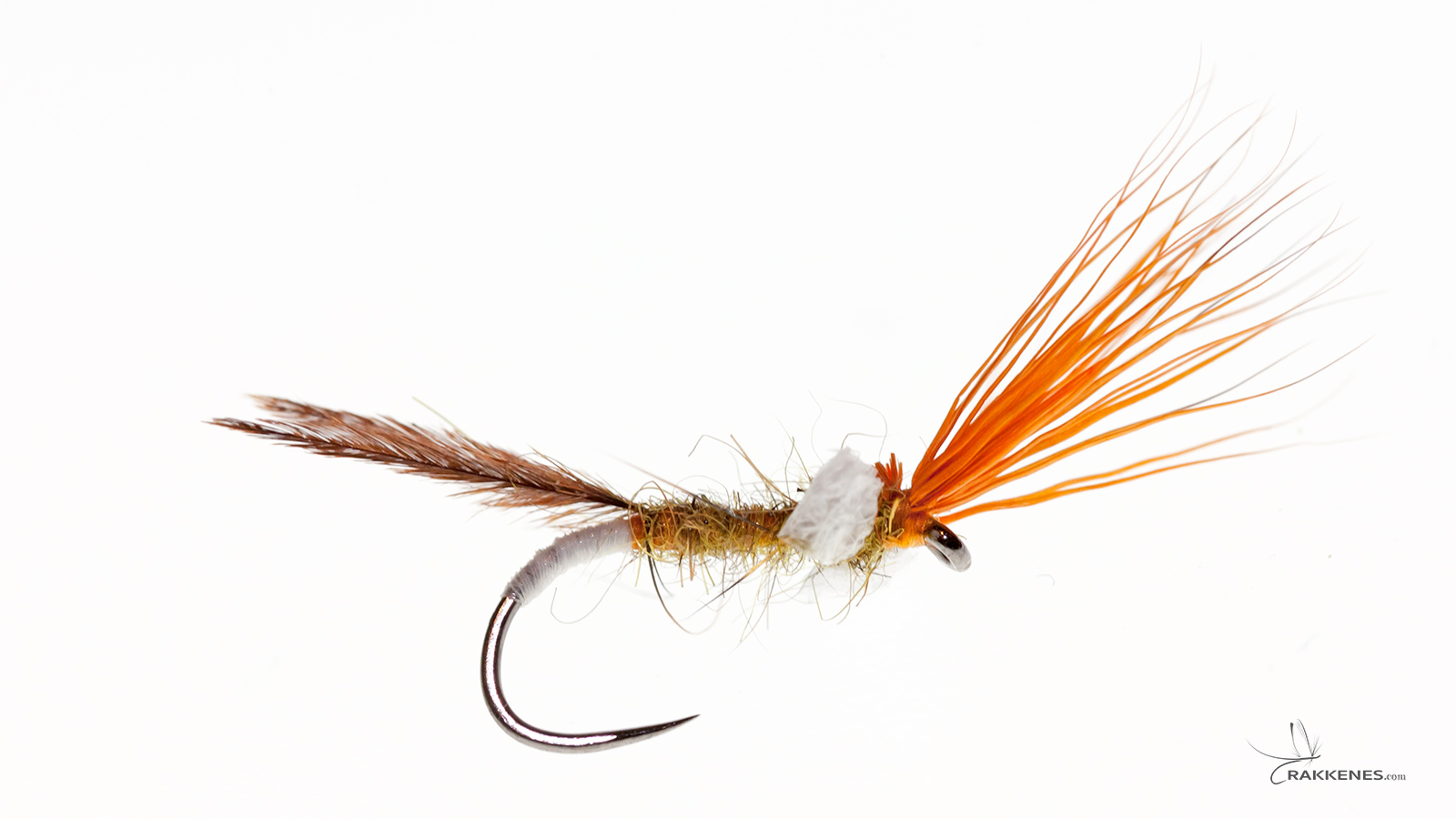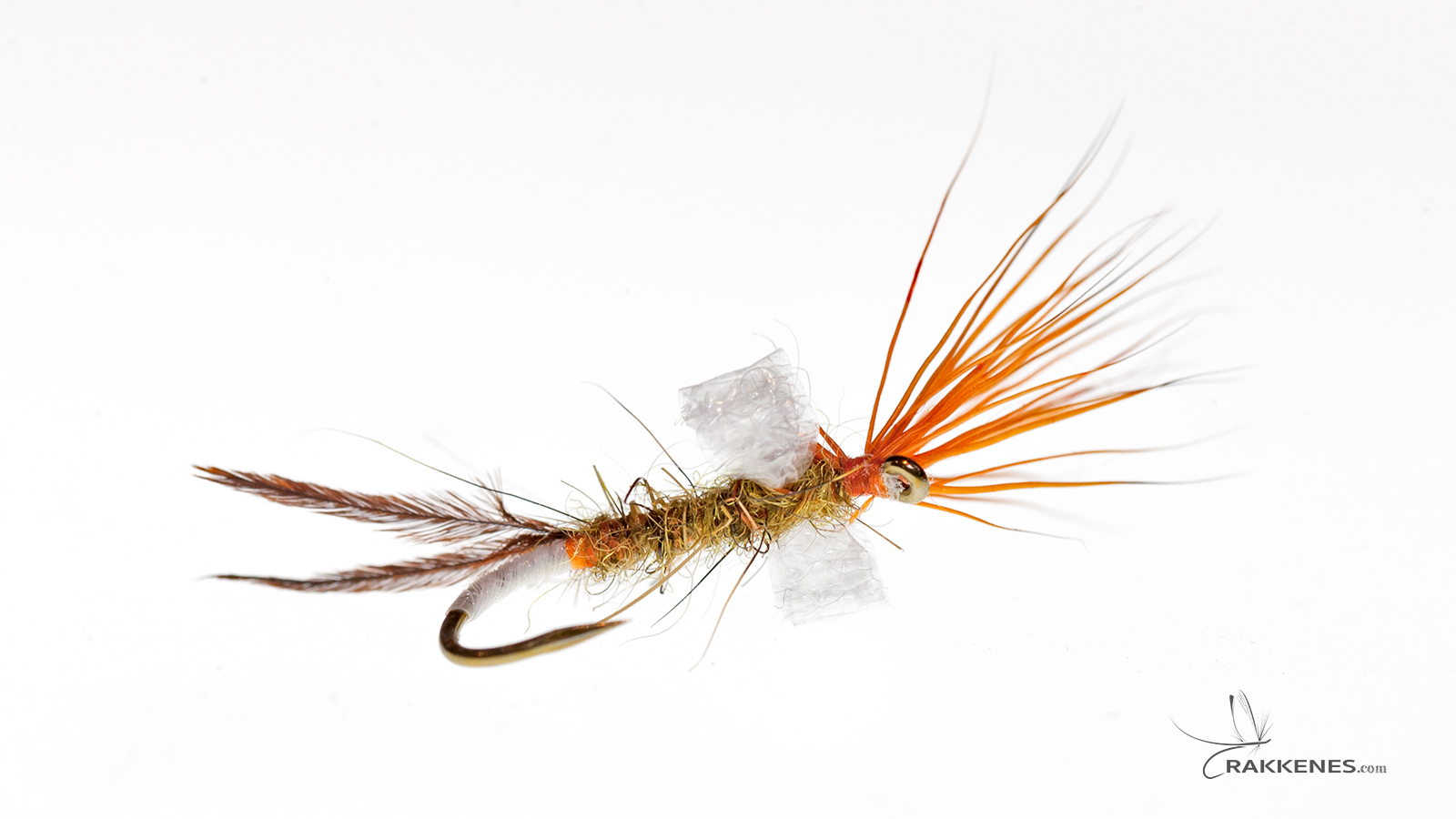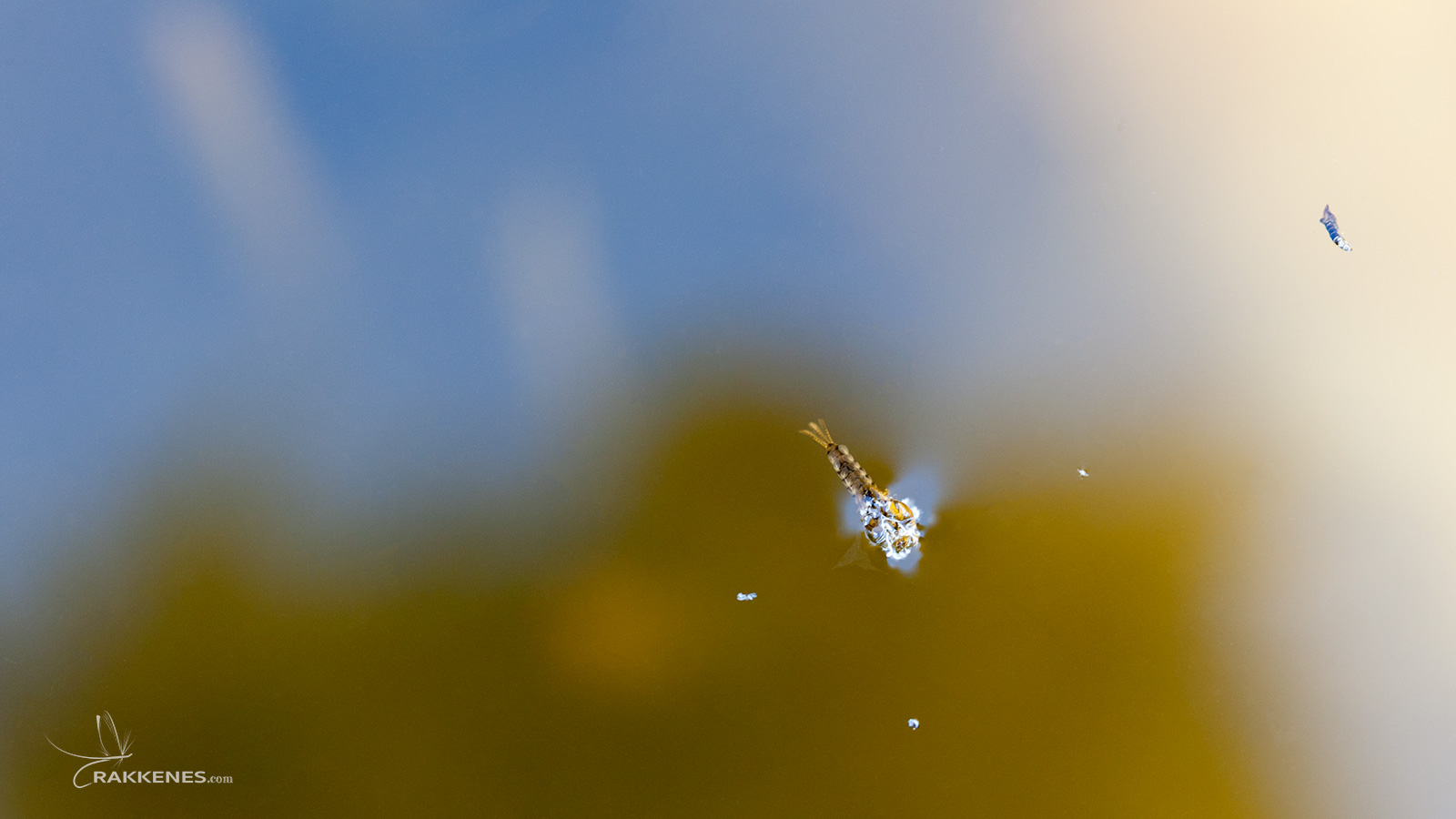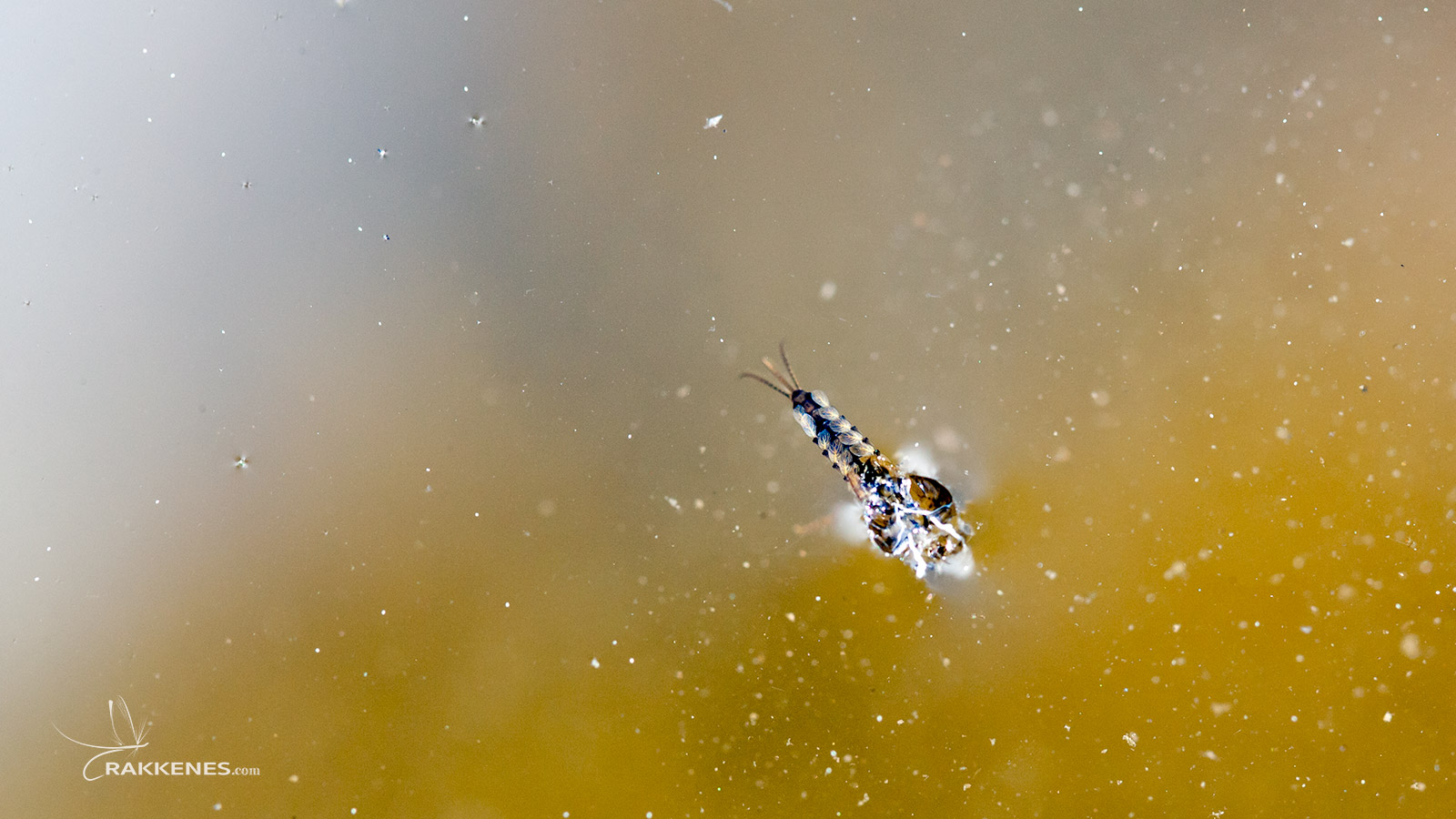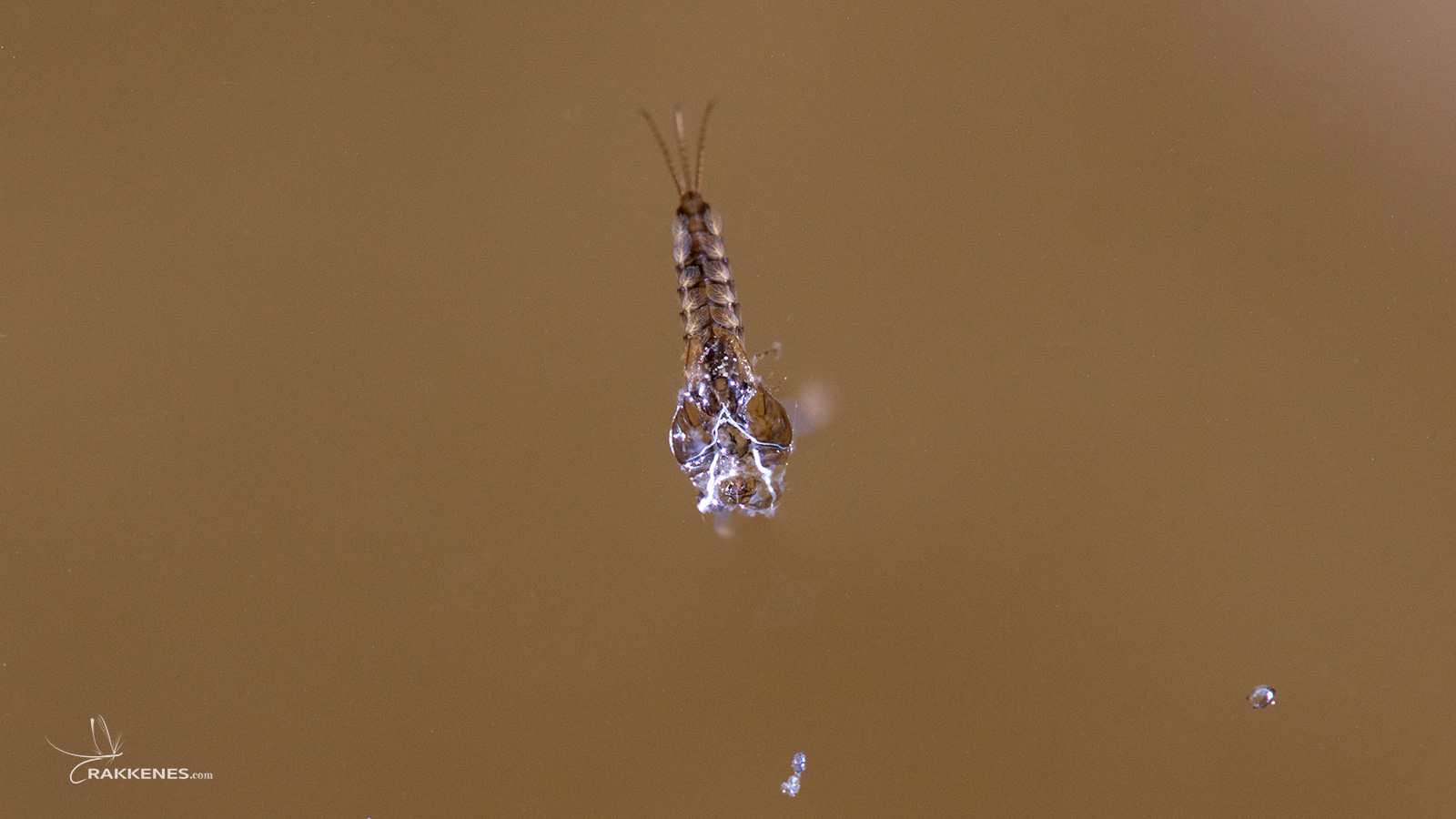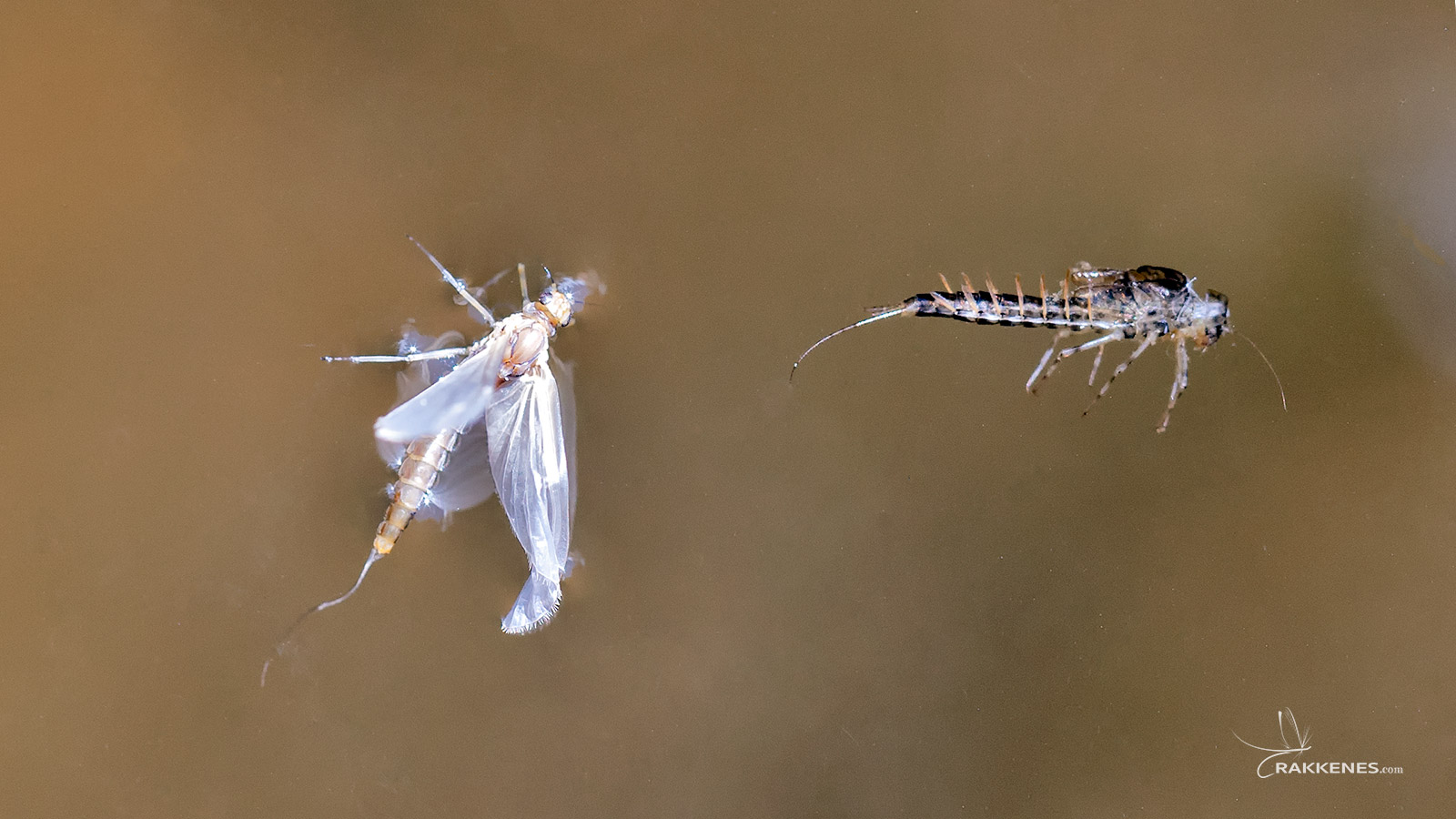– Hi Kjell! What’s this stupid little thing?
My fishing mate stood there with a priceless grin painted on his face. He had just found one of the weirdest looking emergers in my box, ready to lecture me on imitation. The fly was a variant I love to tie in winter, but rarely use during a summer hatch.
– It’s a mayfly emerger, I smiled back at him. It is a pattern with a well-documented efficiency. It’s a classic, but rarely used. It’s a Gary La Fontaine innovation.
A simple yet ingenious design
The emerger he held up against the light with noticeable disbelief was the Halo Mayfly Emerger. A simple pattern, but with an ingenious design based on careful studies. La Fontaine did not only study the naturals on the water, he and his mate Tom Poole actually went under water to study trout, insects and the efficiency of different imitations. The Halo Emergers (there are two variants) are the result of a painstakingly creative approach to understanding the fish, the bug and the imitations.
La Fontaine was a master, able to think out of the box and reach creative heights few others can. Conventions did not matter to him. His unique approach gave us several ingenious designs, among others are the Sparkle Pupae, the Deep Sparkle Pupae and the two different halo emergers.
It mesmerizes fish
Here’s the theory behind the Halo Mayfly Emerger, in Gary La Fontaines own words.
“The triggering characteristic on the Halo Mayfly Emerger is the spike of fluorescent orange deer hair canting upwards. Never mind that it is a wild improbable exaggeration of the budding wings (…) The spike is a great attention grabber. The fly has another powerful visual characteristic – the translucent foam pieces overlapping the thorax. The mayfly laying in the surface film, struggling to climb through the bulging escape hole in the nymphal shuck, shows a brief halo of light. The aura is created by the edges of the stretched skin and the natural air bubbles surrounding the thorax. This feature on either natural imitation not only attracts a trout but also seems to mesmerize him”
The truth behind a lens
I have never studied the halo myself, until this summer that is. I am running a project photographing and documenting insect life in one of “my rivers” in Trysil, Norway. I have shot a lot of bugs earlier, but never emerging insects. This summer I used more time photographing emerging mayflies than I actually fished with them.
In one of my sessions, I was lucky to find a good emergence of the Baetis and the Acentrella in a part of the river where the flow is such that it is possible to shoot them at normal shutter speeds.
As can be seen from the pics below, the emerging Acentrella has a clear halo surrounding the part that is about to break the film. Not possible to see with the eye (remember these buggers are 8-10 mm small), but with a good camera and a macro lens the halo is obvious. The halo effect is not an optical illusion or technical artifact. It is there for sure.
A series of recordings on different days confirms the halo.
Gary La Fontaine for sure was the pontiff of the fly fishing universe when he was alive. Now, after my discovery, the insanely creative genius immediately was canonized.
Rediscovering the halo mayfly emerger
I smiled, sitting behind my Mac editing the pics of the emerging Acentrella, comparing them to the profile of the Halo Mayfly Emerger. Thinking about all the years I left it unused in my fly box, my fishing pal laughing seeing it for the first time and all the situations I have been in where the fly probably could solve my troubles matching the hatch.
Nevertheless, this summer (2016) I rediscovered the Halo Mayfly Emerger. I tied up a bunch in size 14 and 16 and fished it throughout the summer and autumn with great success. I have never before fished a general emerger pattern performing so consistently well.
Looking at the fly, comparing it to the photographs of the Acentrella, you’ll probably see the logic behind the it. The use of Antron, the Marabou and forming the halo with the closed foam makes perfect sense. But what really turns on a grin, is the fiery orange freaky hairdo. Why orange? Why is it there at all?
It is probably a good idea to explain the deer hair as some kind of wing suggestion, but as the master himself explains – “The spike is a great attention grabber”.
I have used the fly irregularly over the years, and must admit that I only have systematically fished it for a season with great results. I guess it takes more than a few trout and a season to prove it, but I have no reason to doubt the Halo Mayfly Emerger.
Click here for more on the Mayfly Halo Emerger, including tying instructions.
My saving grace
Back at the river in September this year. Late season in Norway, but I was lucky enough to run into a pretty nice BWO hatch (Ephemerella Ignita) and some sort of Baetis hatch. It was not a killer day, but the hatch was such that it attracted pretty nice grayling and trout to the surface. Being out of luck with my regular emergers, I tied on the Mayfly Halo Emerger. Bang! The freaky, creative and extremely efficient Halo Mayfly Emerger outfished all other patterns.

